Hello, my friend.
Welcome to Episode 26 of Balboa Park podcast & newsletter. (content is the same, minus the images for the audio version, and you can choose if you want to read the mail/substack post or listen to my voice -CW strong italian accent!-)
Today, I’m shifting gears from telling you about painting, drawing, setting up the creative nest, and graphic journaling to talk about my approach to tattooing, especially the fascinating challenge of cover-up tattoos.
I felt inspired to discuss this topic because this morning, while posting on Instagram—a whole new chapter for me—I realized I have many feelings about the platform. Despite my efforts, I still haven’t managed to understand it fully. As I’ve mentioned in past episodes, I don’t want Instagram to become too much work. So, I have only one account for posting tattoos, illustrations, news, podcast, life, silliness (and I have one for my graphic journal club which is actually a lot of repost from the original account).
It's been a long time since I last posted. Partly because I have a lot going on: promoting the newsletter, this podcast, the Strangeland podcast (in French), and Strangeland Studio activities. Plus, I’m working on the series, The New Perimeter, which you already know about from the newsletter. I thought, “OK, I need to post a tattoo,” but I also want to engage in a conversation about my creative process. Sharing this here on the podcast seems like a fun way to do that because tattooing is very cool and challenging. It’s also a primal way for us to reclaim ownership of our bodies.
Tattooing (like practicing yoga, buying a new pair of shoes, or getting a haircut etcetera) connects us to our bodies. It’s euphoric to do something that makes us feel more human. I love doing and getting tattoos, but sometimes, things go wrong.
(but it can happens that) You might end up with a tattoo you don’t like, or it fades over the years, or you simply no longer want it on your skin. Laser removal is an option, but it’s expensive, painful, and less fun than getting a cover-up tattoo. A well-done cover-up leaves you with a cool tattoo that doesn’t look like a cover-up at all. For me, creating cover-ups is a fascinating challenge.
Cover-up tattoos are a unique art form requiring creativity, skill, and a deep understanding of both the old and new designs. Today, I want to share my process with you. Whether you’re a tattoo artist or considering a cover-up yourself, I hope this is insightful.
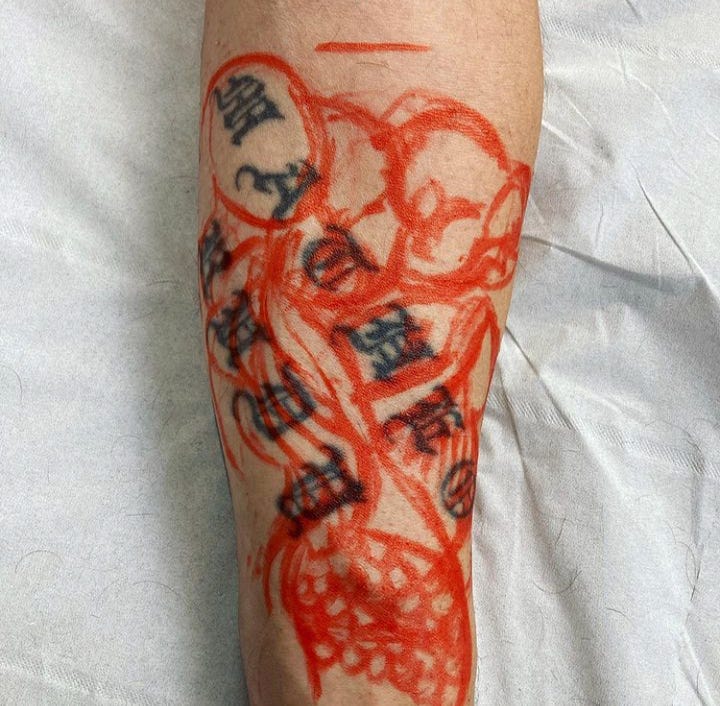
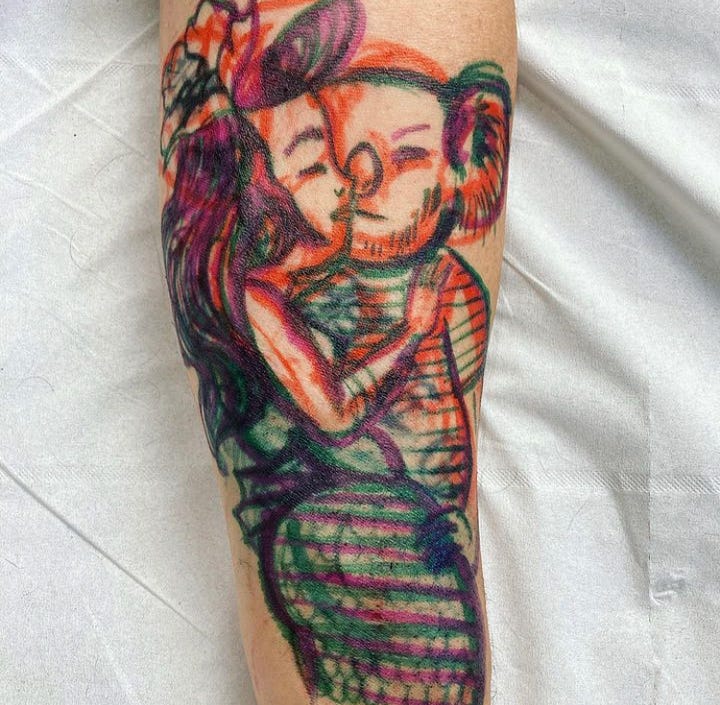

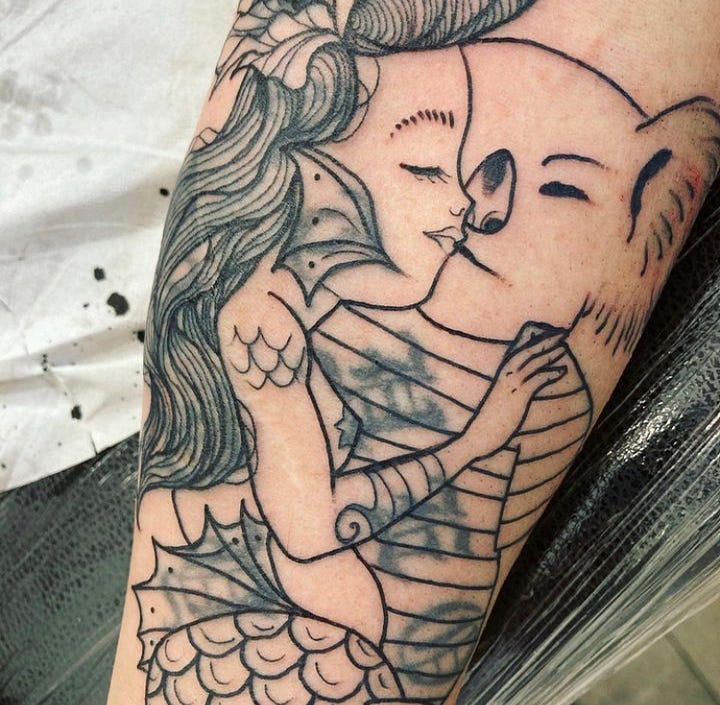
The Process of Creating a Cover-Up Tattoo
Firstly, I start with the initial sketching phase. I begin by cleaning the skin, shaving any hair, and then using a light yellow Sharpie to draw directly on the old tattoo. This step is crucial as it helps both me and the client visualize potential shapes and sizes for the new design. The cover-up needs to be at least two-thirds larger than the original tattoo to avoid looking too dark or obviously covered up.
Once the basic shape and size are sketched, I check in with my client. We look in the mirror to see the area of the skin that will be covered. Although we still don’t have a detailed design, this step ensures the client is happy with the general size and shape.
Communication is key in tattooing, especially with cover-ups. I want my clients to feel involved and satisfied with every step of the process. After getting the initial approval, I move on to detailed composition. Using darker colors like orange, pink, or light green, I refine the design. This phase, which I call the “pomme de terre” (potato phase), brings the new tattoo to life in rough forms.
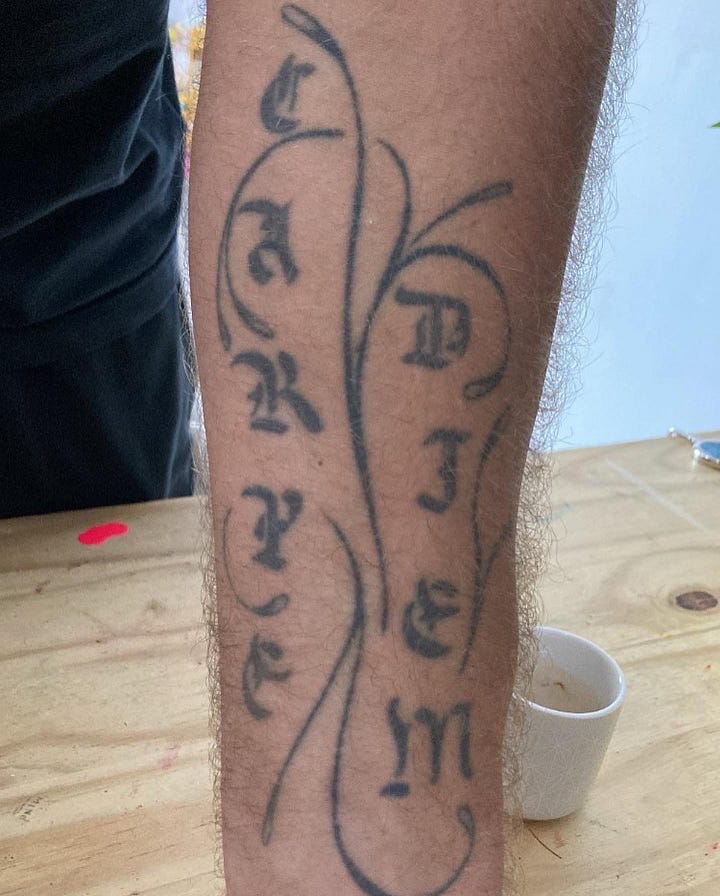



I always have another check-in with the client during this phase. They often can’t see the design while I’m drawing, so it’s important to take breaks and review the progress in the mirror together. Clients sometimes suggest changes, and while not all ideas are feasible, I’m always open to discussion. Freehand tattooing is a collaborative process, and through dialogue, we always find a compromise.
Once the design is finalized, I retrace it with a darker marker—never black, as it can be confusing during the tattooing process. Then, the real transformation begins. Those messy colored lines turn into a beautiful, cohesive tattoo.
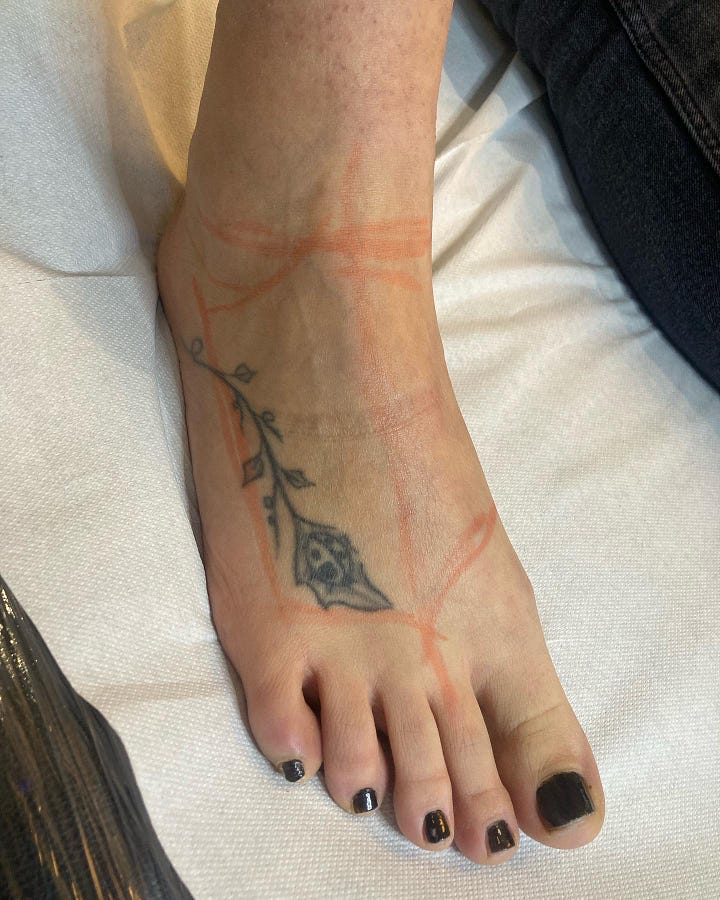
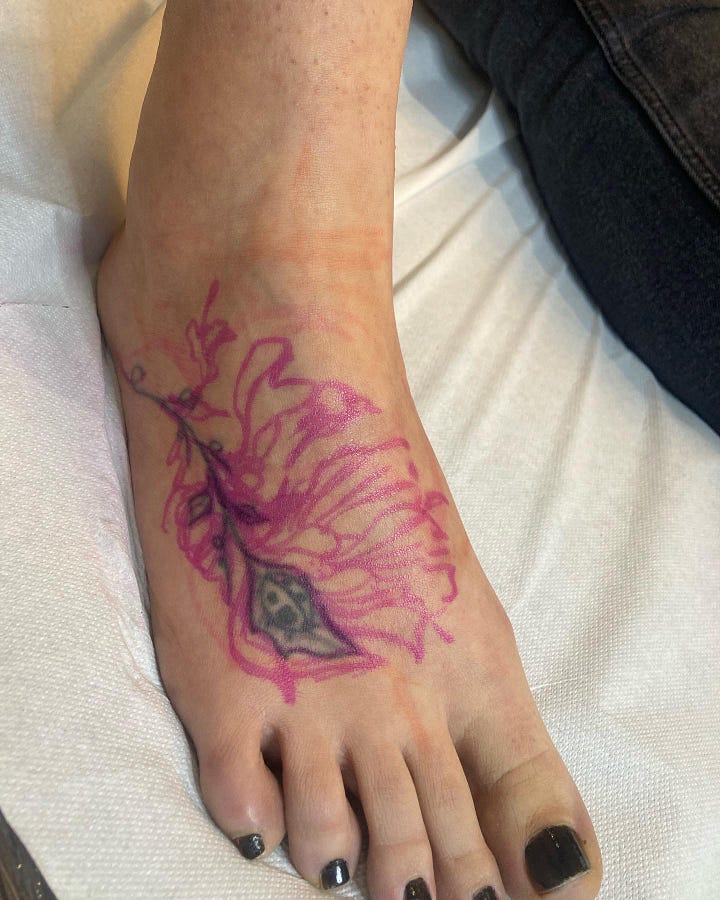
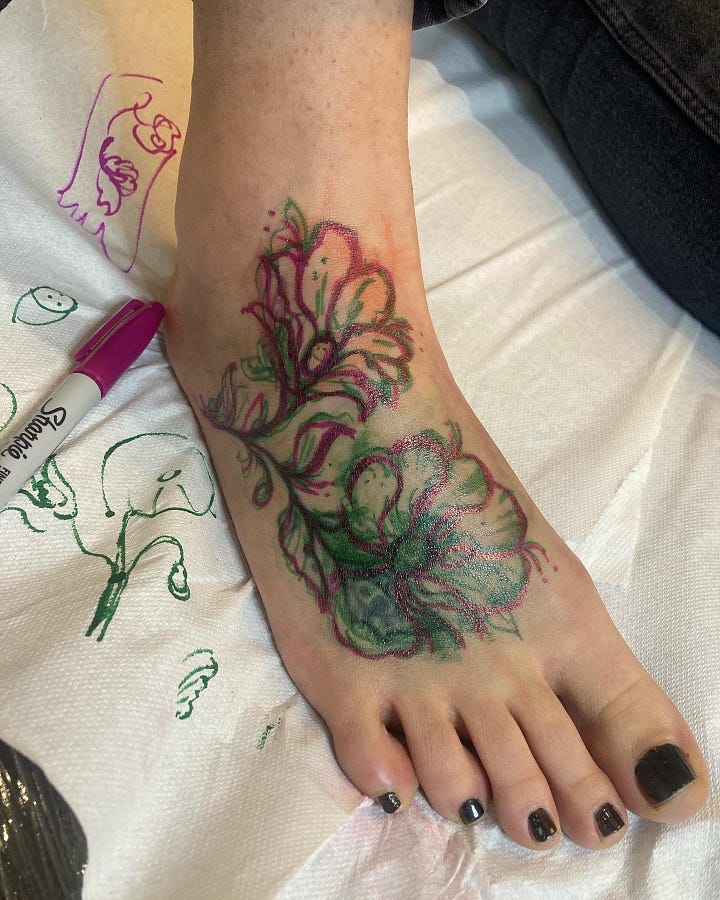
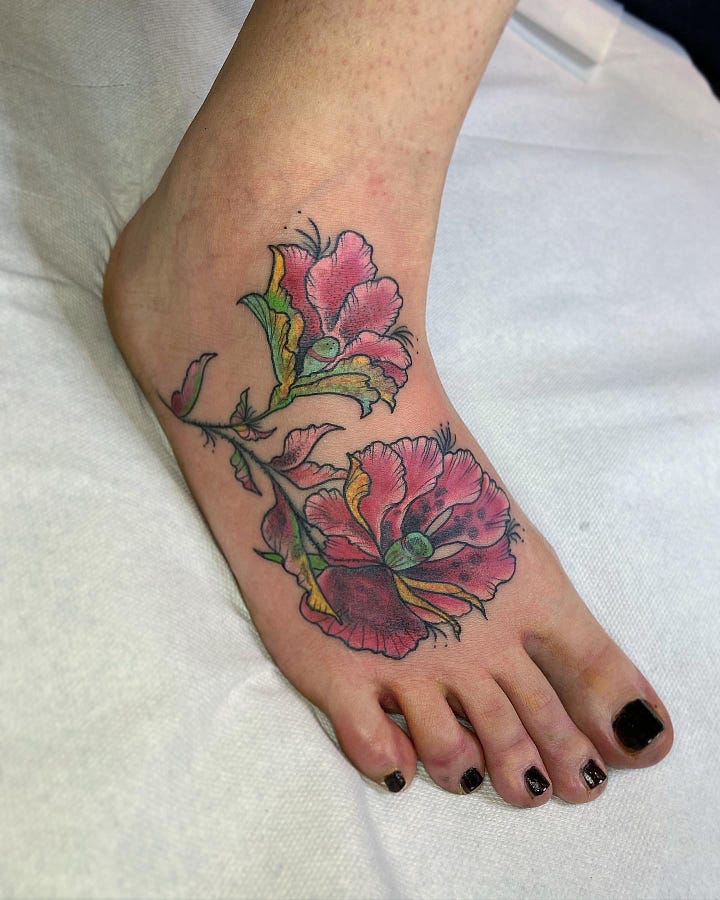
Final Thoughts
Covering up tattoos is an intricate process that requires skill, vision, and patience. It’s not just about technical ability; it’s a deeply collaborative effort between the artist and the client.
Trust is fundamental in this process. When clients choose an artist, they are placing their confidence in the artist's style, vision, and expertise. They are entrusting the artist with a part of their body and a piece of their story. This relationship is built on mutual respect and open communication.
The satisfaction of transforming an old tattoo into something new and beautiful is immensely rewarding for both the client and the artist.
It’s a journey of creative transformation that can breathe new life into a piece that was once a source of regret. If you ever find yourself in La Rochelle, Rome, or Paris with a tattoo you no longer love, feel free to reach out to me. I’m always excited about new cover-up projects and the opportunity to work together to create something you’ll cherish.
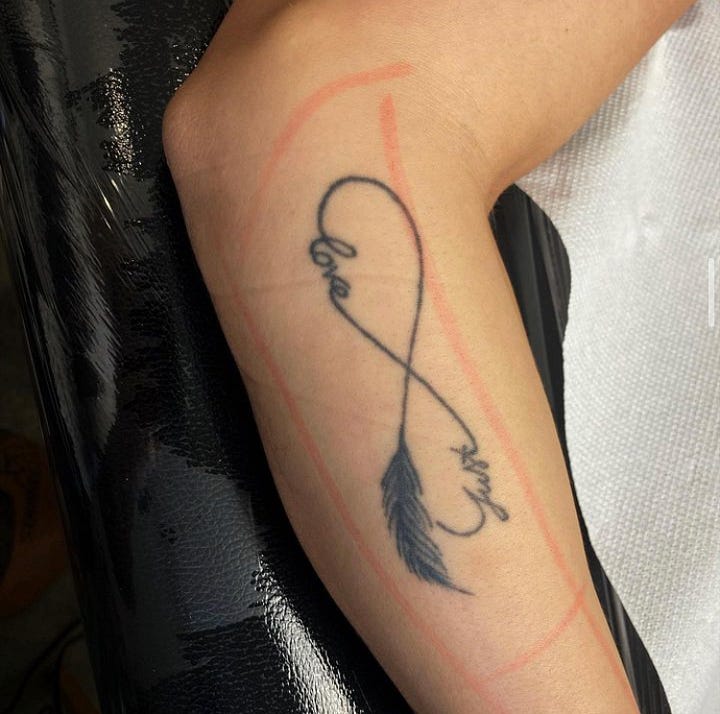
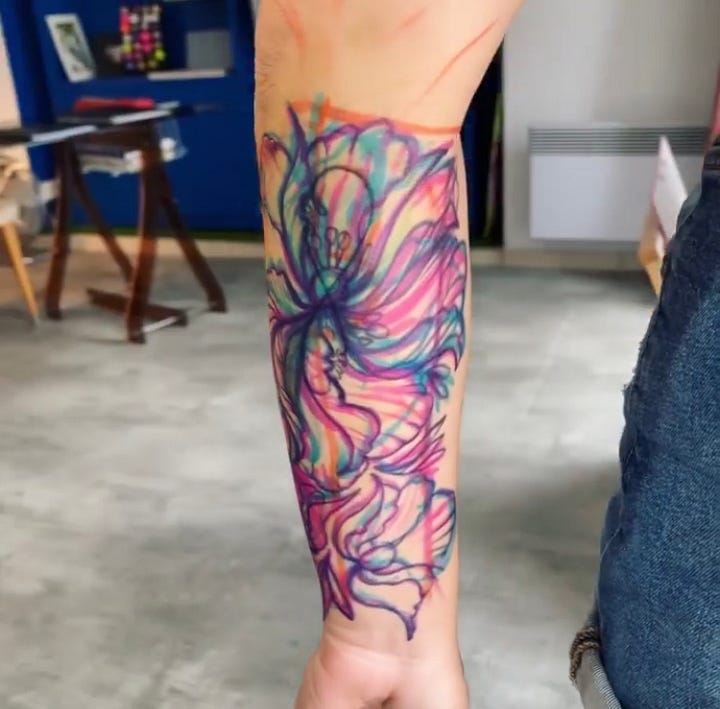

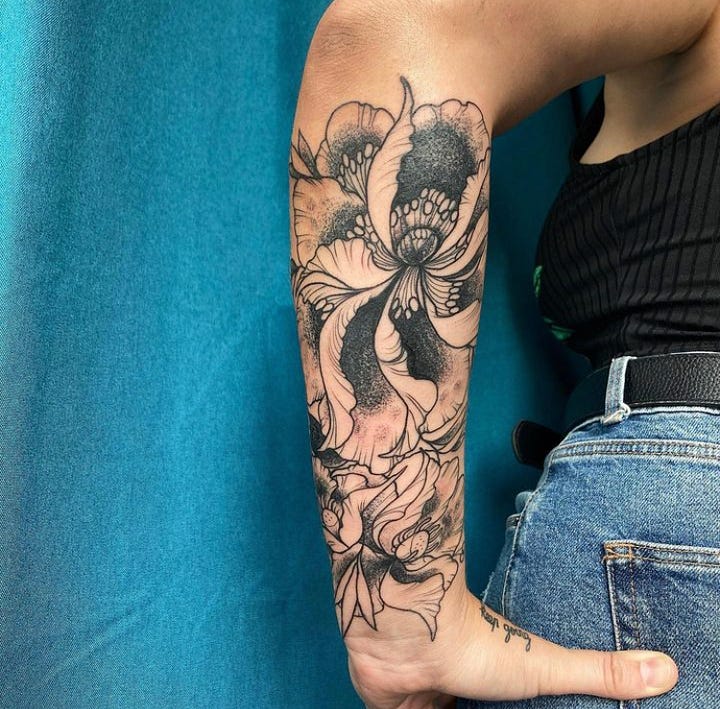
Thank you for joining me in this episode of Balboa Park. If you enjoyed what you read and heard, please share it on your social media or with a friend who might benefit from it—especially someone considering laser removal for a tattoo they’d be pleased to know that there’s always another option.
Don’t forget to subscribe, leave feedback, and give a five-star rating if you liked this episode.
Thank you so much for reading, and I hope to talk to you very soon.
Bye-bye.
PS: I leave you with more exemples of cover ups I did. I did a lot more but, I mean, you got the idea :)

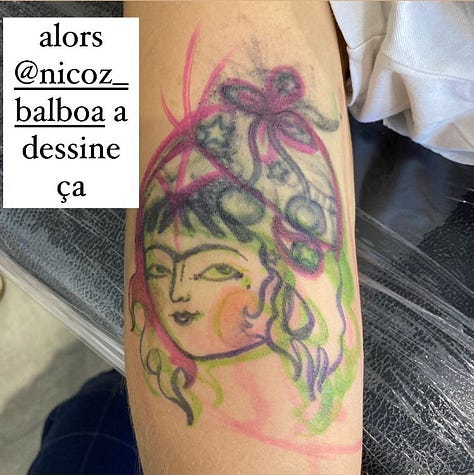





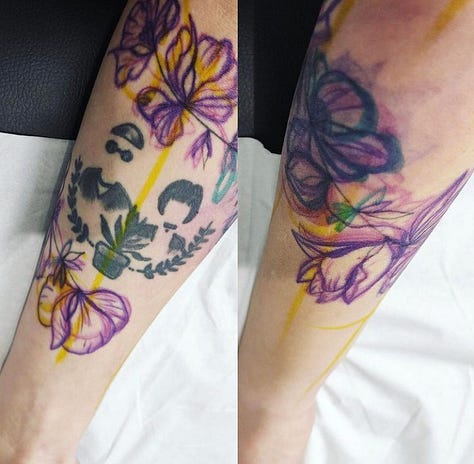
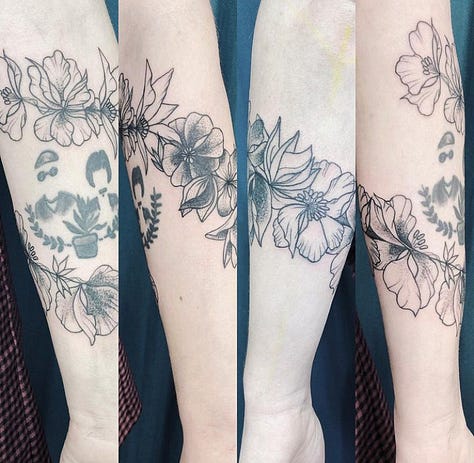
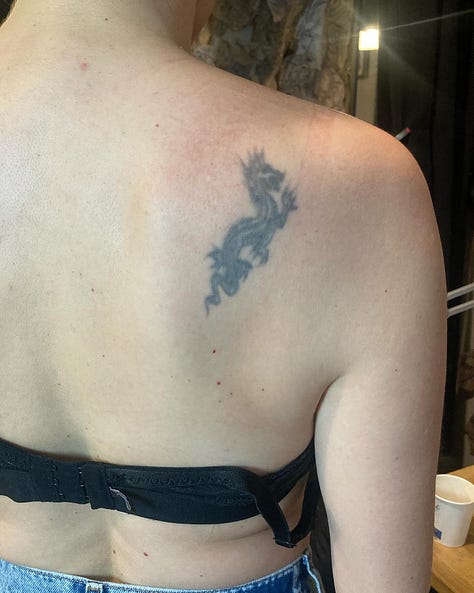

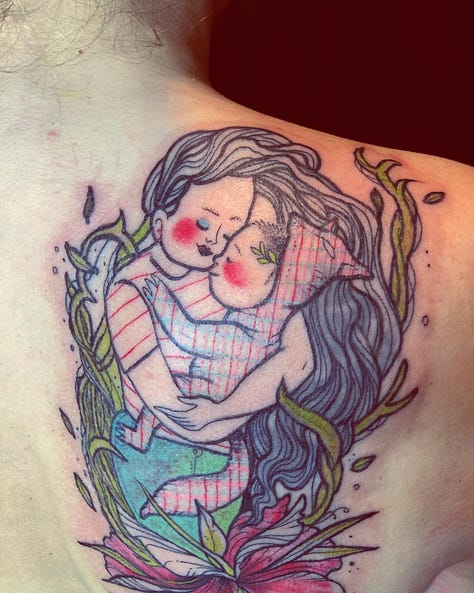

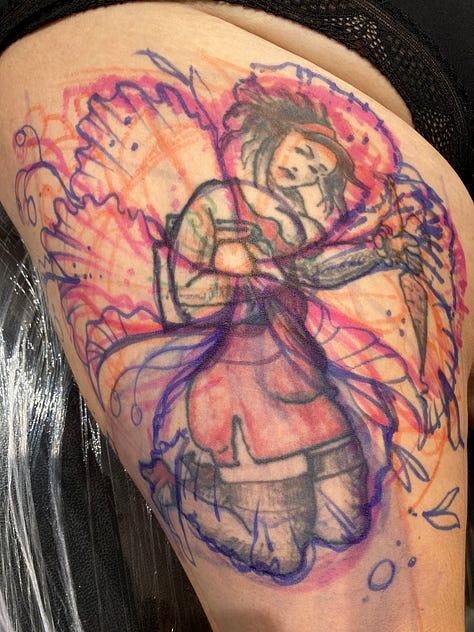
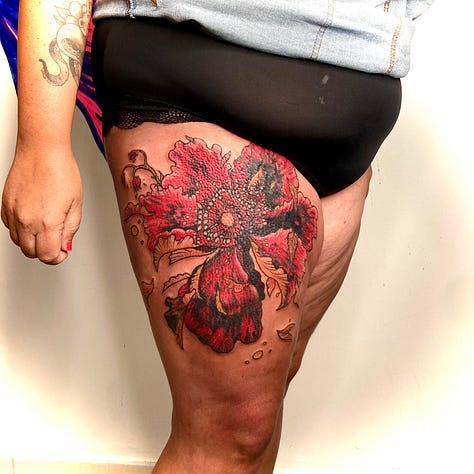

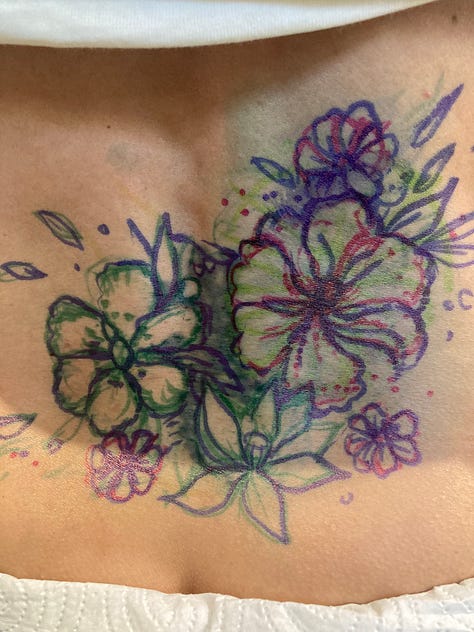
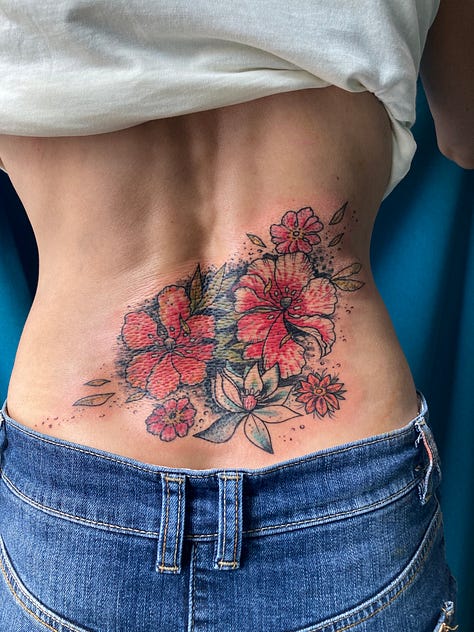








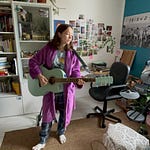




Share this post